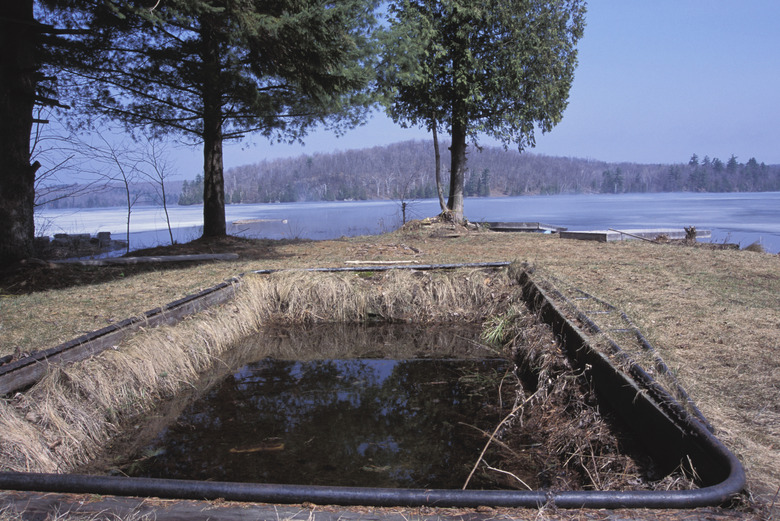How To Decommission Inground Pools
Things Needed
- Push broom
- Screwdriver
- Jackhammer
- Sledgehammer, optional
- Shovel
- Wheelbarrow
- Gravel
- Clean fill or sand
- Topsoil
When the time comes to decommission an inground swimming pool, certain steps need to be taken to ensure safety. An old or unused pool may be unsightly and pose a hazard in a yard. If an owner is trying to sell the home or simply wants to be rid of the eyesore, draining it is not enough. Carefully evaluate the project's cost before beginning. The direct cost for filling in the pool depends on its depth and overall size.
Step 1
Open the drain and allow the water to drain. Use a push broom to clean along the bottom and force standing water to the drain area.
- When the time comes to decommission an inground swimming pool, certain steps need to be taken to ensure safety.
- Use a push broom to clean along the bottom and force standing water to the drain area.
Step 2
Turn off the electric and remove the pump. Unscrew and remove all lights to avoid breaking glass. Contact a pool specialist for instructions on removing the specific pump for your pool.
Step 3
Use a jackhammer to punch holes in the pool's bottom. This prevents rain, snow and other water sources from gathering on the bottom. Place a hole every 3 to 4 feet depending on the pool's dimensions.
Step 4
Remove the top edge of the pool using the jackhammer or a sledgehammer. Break off the surrounding edge that stands above ground level. Shovel away all the loose concrete from the bottom and sides in a wheelbarrow and remove from the area.
- Turn off the electric and remove the pump.
- Use a jackhammer to punch holes in the pool's bottom.
Step 5
Fill the pool halfway up with gravel. This allows water to pass through to the drain and the hole in the bottom.
Step 6
Pour clean fill or sand on top of the gravel to approximately 2 feet from the top of the pool.
Step 7
Fill the rest of the area with topsoil. This allows grass or other plants to grow over where the pool once stood.
Tip
Adjust the topsoil for the intended purpose of the area. For deep root plants, allow for more of it.
Warning
The area may sink over time. Fill back in with topsoil. Plant grass or other plants to assist in holding the soil in place.
